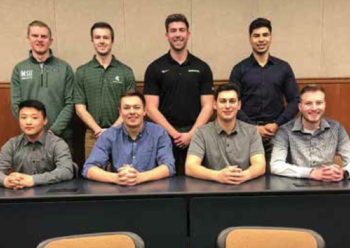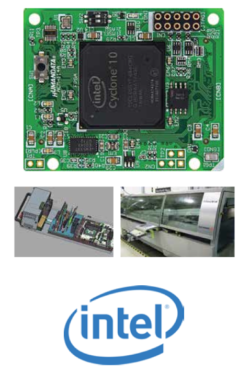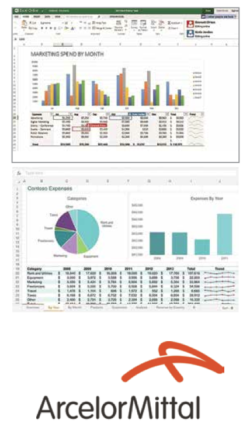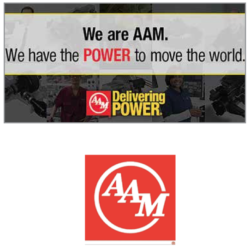Applied Engineering
Projects
For information on becoming a project sponsor, please contact Dr. Laura Genik.
Applied Engineering students participate in Spring Term Design Day. The following were the project sponsors and projects for the Spring of 2018:
MSU Infrastructure Planning and Facilities: Business Case for Campus-wide Temperature Control Guidelines
Michigan State University’s Infrastructure Planning and Facilities (IPF) department is tasked with the enormous project of maintaining the heating, ventilation, and air conditioning (HVAC) systems campus- wide consisting of over 550 buildings. The control technology currently utilized ranges across several decades from entirely manual to entirely automated.
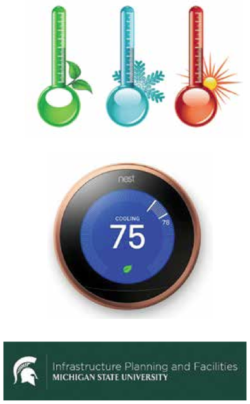
Our team was brought in to develop a business case for a campus-wide temperature control guideline. This guideline includes multiple approaches acknowledging the fact that IPF utilizes a variety of technologies, including direct digital control (DDC). Big data analysis techniques were used to pinpoint weak systems and prioritize the order in which they should be updated. Additionally, a statistic-based marketing scheme was developed to encourage behavioral shifts towards sustainability. This project will serve as the foundation for a campus- wide cultural and behavioral shift towards increased HVAC efficiency and sustainability.
Our team targeted buildings with the most potential to save energy and created a business case/best practices guideline to help move campus towards sustainability regarding room temperatures. To reach this, a 3-faceted approach was developed.
First is the DDC building protocol development, which includes the utilization of current and historical data. This determined the efficiency difference between DDC and non-DDC buildings, the savings from a DDC system, and conveyed possible savings in relatable terms.
The second approach was the non-DDC building protocol for optimal comfort and efficiency, as well as a compliance determination system. The focus was to engage and inspire non-DDC building occupants to follow the guideline.
Lastly, a DDC conversion priority guideline was created. This was a data driven guideline for converting non-DDC buildings to DDC buildings. Metrics to determine this are theoretical energy savings, reduction in comfort complaints, and the cost of DDC installation.
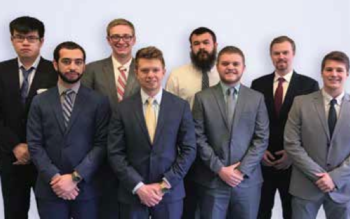
MSU Sustainability: EV Charging Stations

Sustainability has always been a major priority of Michigan State University (MSU), both internally with their own operations, as well as externally to the faculty/staff, students and other visitors to the campus. Now the university is taking things one step further to promote environmental responsibility through the installation of several new EV (Electric Vehicle) and Plug-In Hybrid charging stations.
The university currently has a number of charging stations in various spots around campus. But, MSU’s Infrastructure Planning and Facilities (IPF) team does not believe those existing stations are sufficient to keep up with current or future demand for EV/Plug-In Hybrid charging. This project will, however, be a very costly addition to the campus and should not be done without a proper feasibility analysis. In order to gain further understanding about current and future demand, MSU IPF has collaborated with our team.
The goal of our team is to perform market research on the demand for these charging stations and derive a recommendation for how many new charging stations should be installed as well as where to install them. They should be located in places where it is both convenient for users to access as well as be compatible with the current infrastructure of campus, specifically in terms of electrical power draw capability and potential remote monitoring capabilities. This recommendation will also be dependent on projections of expected use of EV/Plug-In Hybrid vehicles among drivers at MSU.

MSU Sustainability: Innovation for Efficiency – Library Lighting System
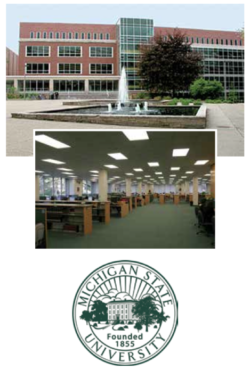
As technology advances so does the use of library space. Presently, the facility is moving from housing numerous traditional books stacked on shelves to a digital library. This has opened a lot of space for new uses by the campus community.
These changes have resulted in an inefficient and inflexible lighting system. Our team analyzed the current state of the lighting system and developed a proposal for an updated system. The proposal includes a three- part plan for updating the library lighting.
Part one of the updated lighting proposal utilizes current infrastructure through the use of new technology, creatively improving the lighting system. This includes the utilization of light motion sensors in strategic areas, daylight harvesting where possible, ensuring proper lighting levels, and other energy saving strategies.
Part two focuses on updating the first floor of the east wing. This involves a full renovation of the current lighting system as well as the implementation of energy efficient lighting fixtures. This new lighting system will be more energy and cost efficient and be designed to be adaptable to future uses of the space as well as compatible with IOT technology.
Part three will adapt the process our team developed in updating the first floor of the east wing to the rest of the library. This process will provide a step-by-step map for future lighting renovations in other parts of the library lighting system.
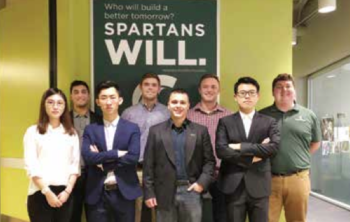
MSU IPF/Johnson Controls: Analysis of Current Operation of the Regional Chilled Water Plant
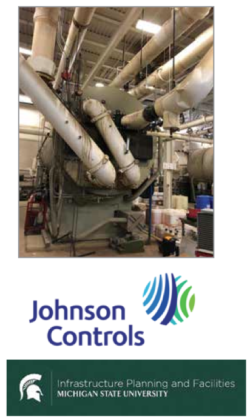
Michigan State University’s Infrastructure Planning and Facilities (IPF) is working with our team and Johnson Controls Inc. (JCI) to improve their Regional Chilled Water Plant on MSU’s campus. The Regional Chilled Water Plant (RCWP) provides cool air to almost 20 buildings around MSU’s campus. The plant has ten chillers that vary in age and usage. Within the next two years, two of the chillers are going to be replaced due to exceeding a 30-year life span. The objective of this project is to find the most efficient way to remove and replace these chillers, while taking into consideration the long-term effects of the replacement.
Our team will be using the Johnson Controls Planning Tool to test different options for the new chillers in the plant. The JCI Planning Tool is a simulation software system that allows companies, such as IPF, to see an overhead view of their current plant layout and test its yearly efficiencies and usage, as well as test new options. When a new change is made to the digital plant layout, future efficiencies and usage are predicted. The purpose of using the Planning Tool is to compare current efficiencies to new predictions, and determine which changes should be made for a given facility. Johnson Controls provides an Optimization Tool that monitors and controls the new plant changes once the Planning Tool simulation has been run and approved. The Optimization Tool will not be used in this project but will be a possible resource for IPF in the future.
For this project, there is no budget or limit to creativity. Our team has the opportunity to think outside the box and implement an effective change. A new idea for these chillers could benefit Michigan State University for decades to come and change the way MSU uses their resources.

Bosch: Reducing Order Cycle Time
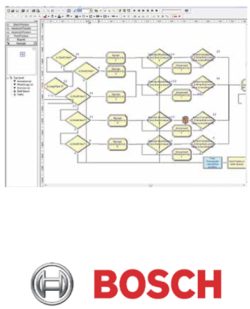
Bosch is an engineering and electronics company headquartered in Germany. Bosch supplies a multitude of parts, ranging from brakes to power tools, that are shipped to different companies in numerous industries. Our group was tasked with finding the inefficiencies in Bosch’s processes that would lead to the solution of reducing order cycle time from three days to two days. Our team was focused on one of Bosch’s tool distribution centers located in West Memphis, Arkansas. Reducing Bosch’s order cycle time would increase profitability and decrease lead time for customers. The approach our team took to accomplish this goal was the creation of a simulation in Arena. This simulation successfully captured the flow of different packages throughout the distribution center.
Our team designed this simulation to include the pick-to-pack procedure of Bosch’s tool shipping process. Our team was searching for any flaw in the current system that was slowing the process throughput time. Using the simulation, our team looked for different bottlenecks, inefficiencies, or inactive systems. Once the problems were identified, discussions were held to review the different opportunities for Bosch to assist with its main goal of reducing order cycle time and the best means of implementing these improvements.
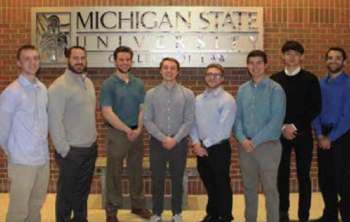
Roberts Sinto Corporation: Mapping Internal Processes

Roberts Sinto Corporation (RSC) is the US branch of Sintokogio, Ltd, headquartered in Japan. RSC builds a variety of machines ranging from automation equipment used in large assembly plants to molding machines, mold handling systems and blast equipment used in the foundry industry. All of their systems have constantly moving machine parts, whether they’re being transferred into a welding robot or connected to the other side of the car. Roberts Sinto is responsible for ensuring all parts fit accordingly.
The main goal of this project is to map the purchasing process at Roberts Sinto Corporation in Grand Ledge, Michigan. Process mapping will help the company discover any opportunities for improvement in their current process and create a future state process map of the purchasing process. The process maps will use swim lines to visually distinguish jobs that share responsibilities with purchasing and display different sub-processes that are directly or indirectly involved.
Surveys will be conducted with the shop floor managers to assess the improvements that need to be made in the purchasing department. Our team will ask questions that assess what needs to be changed to make this process more efficient. Process mapping and data from RedMap will be able to shorten cycle times on products for the buyers at Roberts Sinto Corporation. Roberts Sinto can also use process maps to reduce costs throughout their inventory, labor hours, and waste elimination through surveys and review of the warehouse shop floor.
The future state process map will display a more efficient method of the current purchasing process. Our team will create a more efficient map that displays the processes with the improvements that our team has made by working with the Roberts Sinto purchasing department and other departments related to purchasing. Areas of improvement will be documented and used in creating this future state process map.

Ingersoll Rand: Supply Chain Optimization

This project, sponsored by Ingersoll Rand, is concerned with supply optimization. This is accomplished through the use of a milk-run model to consolidate shipments. Specifically, our team focused on inbound supplier routes for an Ingersoll Rand manufacturing plant located in Lynn Haven, FL. The milk-run route was determined through an analysis of the suppliers for the Lynn Haven plant and the corresponding volumes in each region. Further research was done to find a path that targeted multiple suppliers while also optimizing the overall supply chain for the milk-run region. Ingersoll Rand enlisted our team to develop a model and the supporting documentation for a fully developed milk-run that increased efficiency, reduced inbound freight and inventory costs, and upheld Ingersoll Rand’s commitment to being environmentally conscious through the reduction of carbon emissions. Ingersoll Rand requested a process that consolidated multiple separate supplier routes into a more efficient route that is not only consistent with the Lean Strategy Ingersoll Rand has in place but also reduces the quantity of empty trucks and Less Than Truckload deliveries to the manufacturing plant.
The process that was created is intended to be implemented immediately by Ingersoll Rand at the Lynn Haven Plant as a pilot program. Then, if the milk-run process model is a success, it will be applied across all locations and divisions of Ingersoll Rand and their suppliers. This will exponentially save costs given the many milk-run opportunities available, reducing freight, inventory, and carbon emissions with each new implementation.
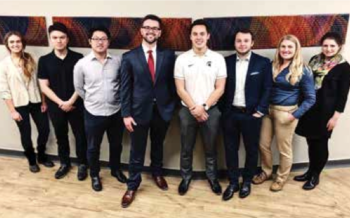
Ingersoll Rand: Retail Distribution Market Network Optimization

Ingersoll Rand is a business-to-business company that manufactures and sells various products across four different product lines. Currently, their product lines include industrial tools, club cars, heating, and cooling. In addition, they also provide transportation refrigeration. Products are sold in over 100 countries through distributors and sales branches. The objective of this project is to optimize Ingersoll Rand’s Heating Ventilation and Cooling (HVAC) delivery network in the Atlanta, Georgia area.
Our team will be analyzing order shipments from three Ingersoll Rand warehouses and 6 parts stores to the final customer. Currently, there is overlap in service coverage resulting in multiple warehouses serving the same area. The overlap in service coverage creates an opportunity for reduction in operational and logistics costs through network optimization while maintaining unsurpassed delivery to customers.
There are four milestones to be completed throughout the project. The first milestone consists of identifying current and new services for shipping. For the second milestone, heat maps will be created to compare the relationship of current warehouse sites and sales. This will show the gaps and overlap areas that need to be worked on or consolidated. For the third milestone, our team will create optimized network models in which warehouses and parts stores do not overlap in services. In milestone four, all of the prospective models will be reviewed and compared to the current services. As of now, the project will focus on the Atlanta, Georgia area but, in the long run, our team hopes to establish a standard process for footprint optimization initiatives to implement across the United States.
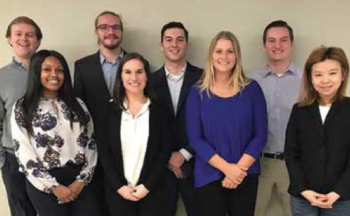
Ingersoll Rand: E-procurement

Founded in 1905, Ingersoll Rand is a global manufacturing company headquartered in Ireland. It enhances operational efficiency, saves energy, and improves productivity through innovative equipment, products, and services. In collaboration with Rochelle Savel, Christian Solorzano, and Erin Nuccitelli, Our team will work to evaluate and help to implement the E-procurement process.
E-procurement is the business of purchasing supplies, work, and services through the internet. Ingersoll Rand has identified an opportunity to improve the procurement process through a third-party company called Coupa, a cloud-based software that works to make the purchasing process more efficient. Through the implementation of E-procurement and Coupa, Ingersoll Rand hopes to identify opportunities to improve the cycle time and total savings of indirect procurement.
Our team is assisting Ingersoll Rand in their effort to enhance the current E-procurement Catalog within the indirect-spend category. The project objective is to identify indirect-spend items to catalog based on market research and company data. In addition, our team will determine which items are sourceable or non-sourceable, identify whether current catalogued items are goods or services, and document which indirect commodities to catalog. Our team hopes to evaluate the change in cycle time to procure indirect items and evaluate the total cost savings related with E-procurement.
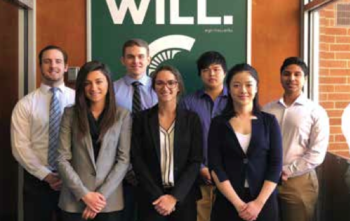
Hess Corporation: Strategic Category Development

Hess Corporation is a leading global independent energy company engaged in the exploration and production of crude oil and natural gas. Founded in 1933 by Leon Hess, the company is currently headquartered in Houston, TX with operations around the globe. Hess has two industry leading positions in the U.S. in Bakken, North Dakota and Utica, Ohio.
Last year Hess Corporation had 4 rigs that drilled 80 wells in Bakken. This year, Hess has 115 planned wells. This increase in business has caused an increase for services provided to the drilling rigs. As the drilling rigs are running they produce solid waste from the well they are drilling. This waste is removed from the site and disposed of by contractors in accordance with EPA regulations.
To accommodate the increase, vendors in Bakken received a request for proposal. The request for proposal includes questions for the vendor to answer and pricing booklets, among other things. When the request for proposal is returned, four different criteria are used to score the vendors that choose to respond to the request for proposal: safety, quality, delivery, and cost.
Hess operates using lean techniques that they have adapted to the oil and gas industry. They are committed to sustainable business practices and social practices within the community. They are seeking a vendor that can operate in the same way and scale with Hess in Bakken.

Intel: Inventory Management Strategy for xPV Testers
Intel is a supplier of processors for computer system manufacturers and other IT products. Intel’s business is expanding at this point and has been having issues with inventory management. This project focuses solely on one of its product testers, known as xPV, and on their manufacturing facility located in Malaysia. The xPV testers are a highly customized chip tester made according to both chip design and customer requirements. Due to its characteristics, which include uniqueness, unpredictable demand, long lead-time, sensitive components, and minimum quantity orders, Intel’s current inventory strategy is not equipped to handle the high variability in demand. The xPV testers are a high part count, high mix and low volume product, which ultimately results in a high level of excess inventory.
Overall, there are two main opportunities. First, our team has proposed a new inventory management strategy for the xPV testers. Although the xPV inventory strategy is very broad, it focuses heavily on the commonly faced problems that occur when managing xPV inventory. Next, our team has performed internal data analysis to reduce the level of excess inventory. Intel uses an SAP system, and it requested various internal data reports, including the bill of materials, customer purchase orders, point-of-sale transactions, and the shelf life of xPV testers.
Our team is focused on creating guidelines of how much excess inventory to keep in-house and find an effective inventory management strategy for the unique xPV tester product. Ultimately, by utilizing the internal data analysis, it is hoped that our team can help reduce xPV inventory by 50% as well as create a more time efficient decision-making and purchasing process.

Grant Thorton: Historical M&A Deal Analysis Study
Established in 1924 and headquartered in Chicago, IL, Grant Thornton has evolved into one of the world’s leading organizations of independent audit, tax and advisory firms. With revenues in excess of $16 billion and 59 operating offices, Grant Thornton is on a mission to help clients achieve their business and personal goals.
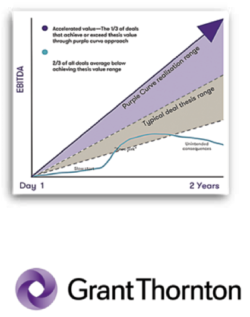
Grant Thornton deals largely with mergers and acquisitions, creating value across the M&A life cycle using their unique process that follows the Purple Curve. With this approach, GT avoids the pitfalls that many M&A deals face, while maximizing sustainable deal value.
It is essential to understand original deal drivers, or rather the compelling reasons why a company decided to make a deal, and what the results were, in order to understand any value gaps. After identifying value gaps, it is important to understand the root cause of them. Because each deal is different, numerous reasons arise.
All data analyzed comes from surveys completed by previous GT M&A clients. Using Excel and Tableau, our team analyzed how well deals within the last 5 years performed against Grant Thornton’s Purple Curve, in regards to both value realized and timing of value realization. Our team confirmed that the surveys typically did not reach the intended respondent (C-Suite or one level below), leading to less accurate and less descriptive results, and that the majority of value ‘missed’ or ‘lost’ was in areas relating to IT systems and culture integration.
The findings, compiled into a valuable White Sheet document, will help private equity, middle market, and Fortune 500 companies to better understand the common sources of value, timing of realization, and deal risk so they can better position their organizations to create more value in their own deals.
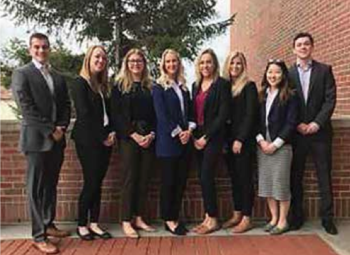
BASF: Market Research for High Insulation Material
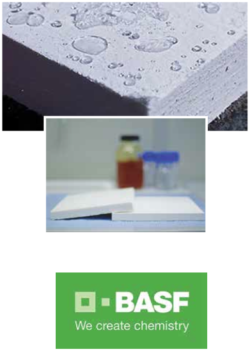
Our team worked with BASF to analyze two new high-performance insulation materials (HPIM): Slentex® and Slentite®. Within BASF, the HPIM market belongs to the multi-billion-dollar Performance Materials business function, which in 2016 accumulated €6.888 billion in sales. The ultimate goal is to add to this bottom line by researching a variety of applications and markets for the two insulation materials that BASF has yet to enter.
Slentex® and Slentite® are both high-performance insulation materials that provide inimitable performance compared to the rest of the market. They provide significantly greater insulation, while using less material. Both products are aerogels, which are Nano porous solids in which gas has replaced the liquid component in traditional gel. Their differentiating features, however, provide a variety of unique applications for each product.
The first step towards identifying new applications and new markets for Slentex® and Slentite® was to establish a basic understanding of the HPIM market, after which our team developed a methodology for evaluating future applications. This methodology involved evaluating market size, market growth, weight of environmentally friendly pressures, and the degree to which Slentex® and Slentite® could provide a sustainable competitive advantage. In this way, BASF will be able to use this decision-making process to evaluate future uses of these two materials.
After developing a list of applications and markets for Slentex® and Slentite®, our team conducted additional research, including cold calling potential clients and meeting with current key account managers at BASF to further determine the market appeal of the future applications.
Through this process, several different markets and applications were identified and recommended to BASF as future business ventures to pursue.
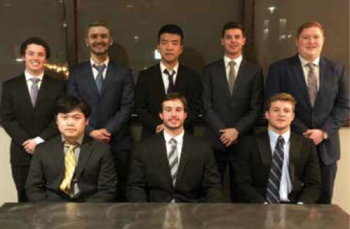
ArcelorMittal: “Beached” Iron Decision-Making Model
ArcelorMittal is the world’s leading steel and mining company producing approximately 133 million tons of crude steel annually. ArcelorMittal was ranked as 123 in the 2017 Fortune Global 500, a ranking of the world’s biggest corporations. With 199,000 employees across 60 countries, ArcelorMittal is leading the way in the steel business.
The first major process in creating steel is the creation of molten iron from various raw materials including scrap, iron ore and oxygen; this molten iron is later refined into steel. Since ArcelorMittal’s iron creation is a continuous process, there are instances when the amount of molten iron produced is too much for the steelmaking process to handle. The plant must “beach” some of the molten iron, by pouring it slowly over a bed of slag, in order to save it for future uses. The company may break it up and reuse it later in the steelmaking process or sell it to an outside company.
For this project our team has designed a model that operates on a monthly basis to determine the most cost-effective strategy for the plant’s excess beached iron. The model considers the different conditions for each month and determines the best decision based on various factors including the amount of scrap inventory on hand, the market price of beached iron, and transportation costs.
This model will have a major impact on ArcelorMittal by generating revenue from the sale of beached iron or reducing the costs of purchasing raw materials, depending upon monthly conditions. The project will also open up acres of storage space in their facilities currently being occupied by unassigned beached iron. Lastly, the project will save the company valuable time by giving them an immediate answer to a monthly decision.

Asahi Kasei Plastics: Warehouse Expansion Project
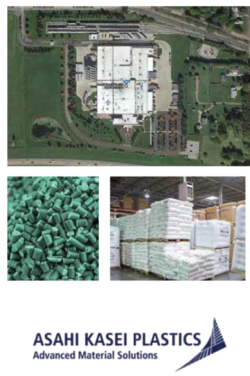
Located in Fowlerville, Michigan, Asahi Kasei Plastics North America (APNA) currently faces a dilemma one could only hope for: their innovative plastics are proving to be in high demand. APNA is becoming increasingly aware that their current facility lacks the capacity for storing their high demand of finished goods. Lately, APNA has been housing finished products in third- party warehouses as the plastic resins await their end destination.
To keep up with demand, which is forecasted to increase, APNA has concluded that expansion is necessary to output future volumes and to maintain a competitive supply chain advantage. Their goal is to expand for future production, offset third party storage costs by adding additional warehouse space, and to do this all within a 5-year period.
The challenge presented to our team of is full of logistical conflicts. Material flow and productivity must be maintained to prove financially beneficial. The site to be built upon is landlocked in virtually all directions. Westward expansion involves moving extensive masses of machinery, resulting in large takedown costs paired with an unknown length of downtime. The logical response to add additional space towards the east is met with residential properties. The north is locked in by a heavily utilized railyard, while the southern portion is hindered by the presence of Interstate 96.
By analyzing capacity requirements, our team is set to deliver a warehouse expansion plan within budget, material flow, and facility location limitations. Tasked with providing a unique solution to an international supplier with local Michigan roots, our team is developing a space that all members involved will find both aesthetically and fiscally rewarding.
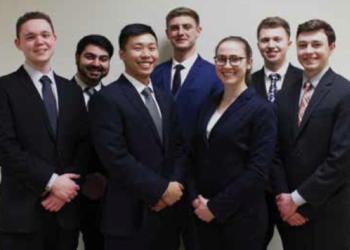
American Axle & Manufacturing, Inc.: Transportation Initiative
American Axle & Manufacturing is a global Tier-1 manufacturer of automobile driveline and drivetrain components and systems. Headquartered in Detroit, MI, AAM has over 25,000 associates operating at more than 90 facilities in 17 countries around the world, including France, The UK, Germany, India, and Japan. To support AAM’s customers on a global and regional platform, their focus is mainly drawn towards quality, operational excellence and technology leadership.
AAM currently uses a third-party logistics provider to transport their products. The goal of this project is to determine whether a leased transportation fleet would provide cost savings when compared to their current transportation network.
As a starting point, the project will only encompass dedicated lanes within Michigan. The project will have two deliverables, with the first being a cost analysis report related to leasing a fleet of trucks. The report will have detailed information pertaining to what kind of trucks will make up the fleet, as well as additional information regarding the operating costs of a leased fleet of trucks. The second major deliverable will be a map of the dedicated lanes servicing Michigan. These maps will show where improvements can be made within the lanes.
In order to successfully determine the feasibility of this project, both deliverables will be heavily considered in the final report. After creating a map of dedicated lanes with the best efficiency and considering costs of transportation and travel, AAM will be able to successfully determine the best logistical option
